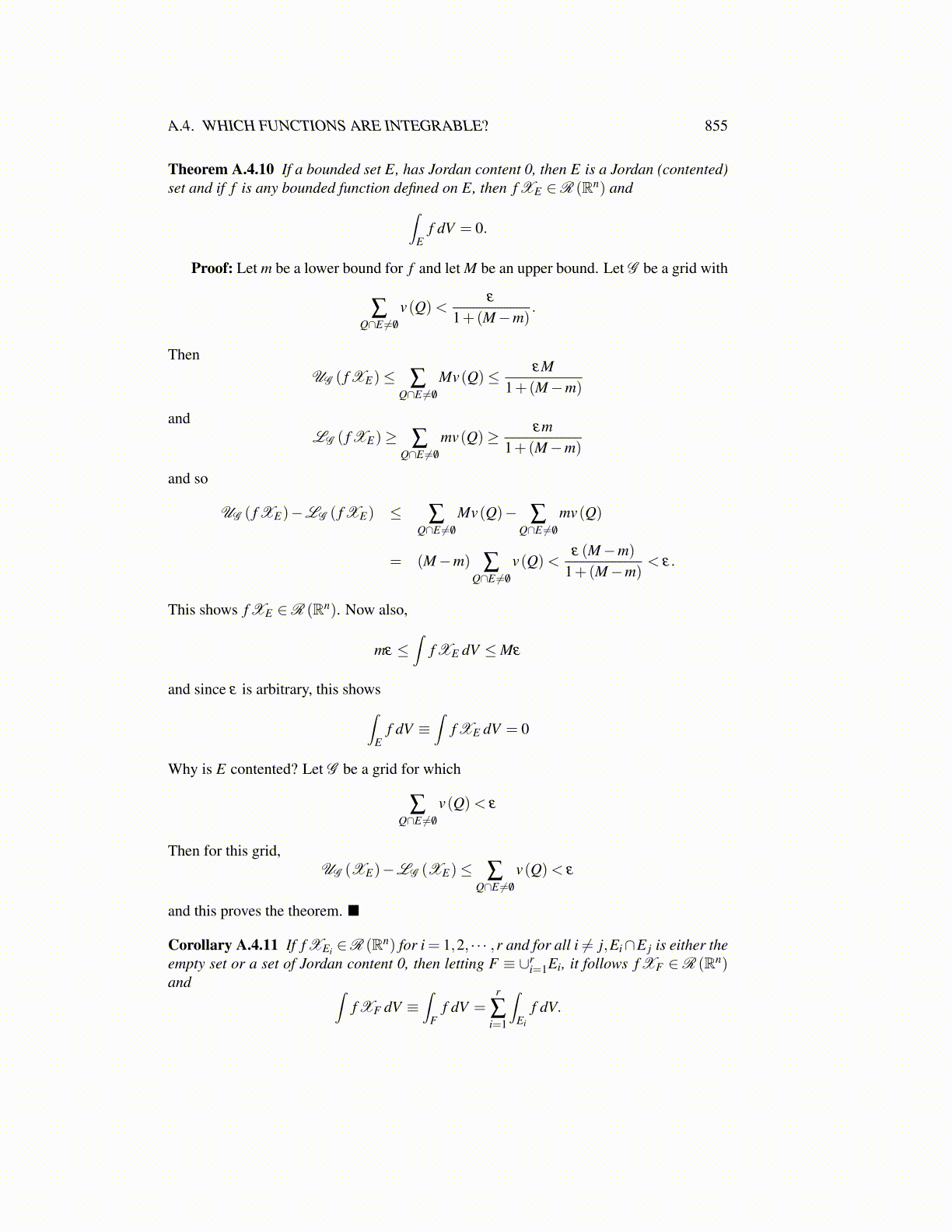
A.4. WHICH FUNCTIONS ARE INTEGRABLE? 855
Theorem A.4.10 If a bounded set E, has Jordan content 0, then E is a Jordan (contented)set and if f is any bounded function defined on E, then f XE ∈R (Rn) and∫
Ef dV = 0.
Proof: Let m be a lower bound for f and let M be an upper bound. Let G be a grid with
∑Q∩E ̸= /0
v(Q)<ε
1+(M−m).
ThenUG ( f XE)≤ ∑
Q∩E ̸= /0Mv(Q)≤ εM
1+(M−m)
andLG ( f XE)≥ ∑
Q∩E ̸= /0mv(Q)≥ εm
1+(M−m)
and so
UG ( f XE)−LG ( f XE) ≤ ∑Q∩E ̸= /0
Mv(Q)− ∑Q∩E ̸= /0
mv(Q)
= (M−m) ∑Q∩E ̸= /0
v(Q)<ε (M−m)
1+(M−m)< ε.
This shows f XE ∈R (Rn). Now also,
mε ≤∫
f XE dV ≤Mε
and since ε is arbitrary, this shows∫E
f dV ≡∫
f XE dV = 0
Why is E contented? Let G be a grid for which
∑Q∩E ̸= /0
v(Q)< ε
Then for this grid,UG (XE)−LG (XE)≤ ∑
Q∩E ̸= /0v(Q)< ε
and this proves the theorem. ■
Corollary A.4.11 If fXEi ∈R (Rn) for i = 1,2, · · · ,r and for all i ̸= j,Ei∩E j is either theempty set or a set of Jordan content 0, then letting F ≡ ∪r
i=1Ei, it follows f XF ∈R (Rn)and ∫
f XF dV ≡∫
Ff dV =
r
∑i=1
∫Ei
f dV.